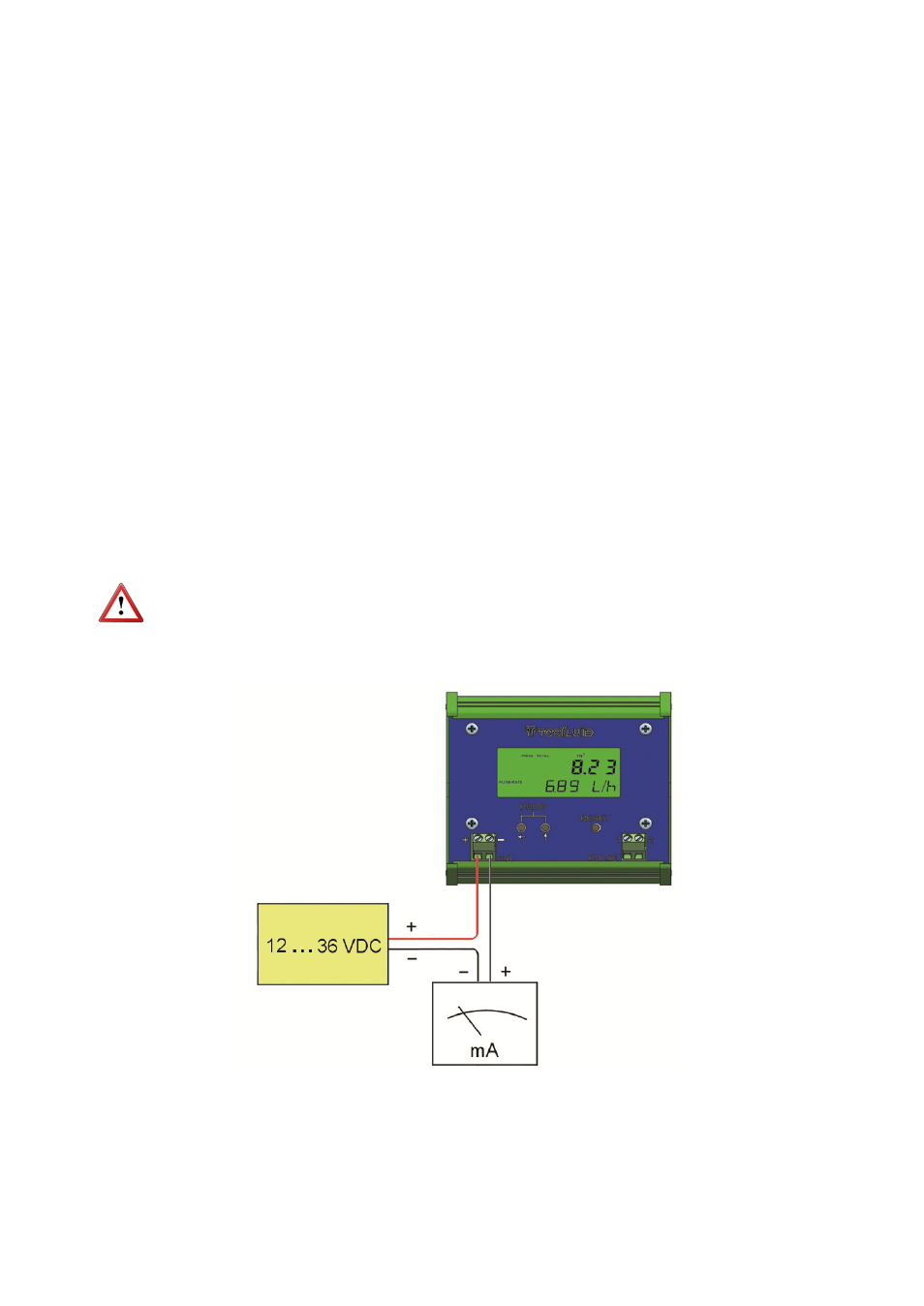Introduction, Electrical connection, 1 power supply and analog output – Tecfluid CP420R User Manual
Page 4

4
1 INTRODUCTION
The electronic transmitters CP ... CH420R are DIN rail modules designed to work with
Tecfluid’s oscillating piston flowmeters (COVOL) and turbine flowmeters. The instruments
are supplied already configured for the type of input.
The circuit is based on a microprocessor that, in function of the pulses per litre
programmed, calculates the flow rate and totalizes the volume that flows through the
meter and shows these values on a local indicator.
The CH420R differs from CP420R in that it is also HART protocol compatible.
2 ELECTRICAL
CONNECTION
For the electrical connection, the transmitter has two screw terminal strip.
For the electrical installation it is recommended to use multiple conductor cables with
individual cable sections in the order of 0.25 to 0.5 mm
2
in order to make it easier to
connect.
A twisted pair wiring should be used to avoid electrical interferences in the 4-20 mA loop.
In some instances, shielded cable may be necessary.
Peel the outside insulation to free the inner cables. It is recommended to tin the ends of
the wires to avoid loose ends. Screw down the cables in the corresponding positions of
the terminal strip.
To help in the wiring of the equipment, the description of the terminals is marked on the
printed circuit next to the terminal strip.
Before connecting the power supply, you must be sure that the supply voltage is the
correct one for the installation. The power supply voltage is indicated on the label of the
transmitter.
2.1
Power supply and analog output
The positive terminal of the power supply is connected to the position + and the positive
terminal of the load in the position -. The negative terminals of the power supply and the
load are connected together. The instrument works in a 2-wire system, that is, the supply
and signal line is the same. It is recommended to use a twisted pair wiring or shielded
cable to avoid interferences in the current loop.
